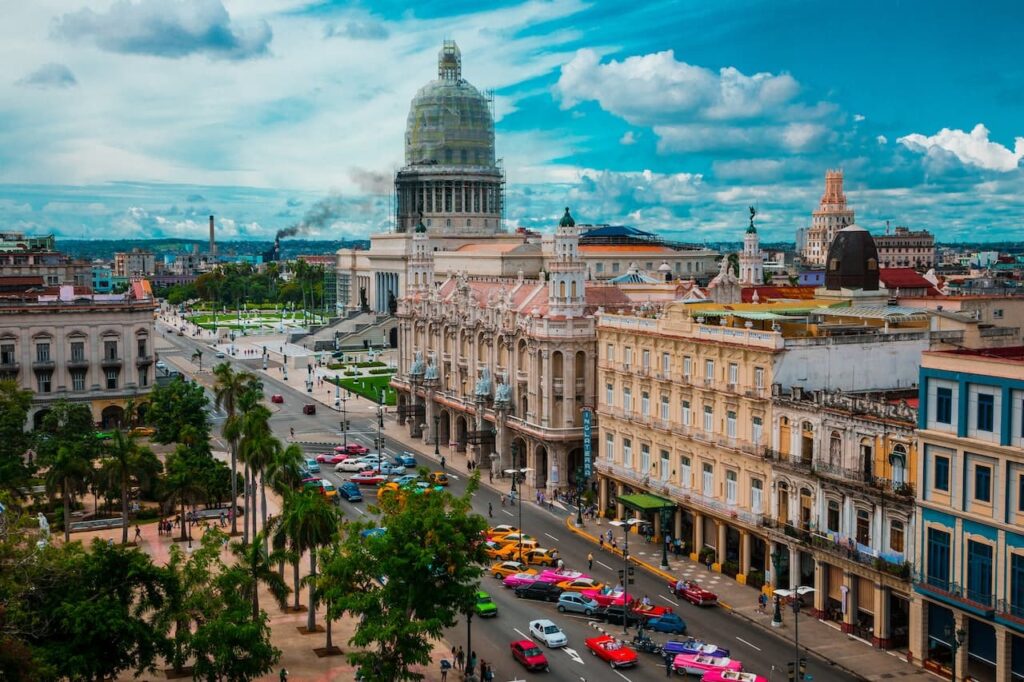Cuba
Cuba Cities for Tourists: A Comprehensive Guide
Cuba is a beautiful island nation with a rich history and culture. It is a popular tourist destination, known for its stunning beaches, colonial architecture, and vibrant nightlife. There are many different cities and towns to visit in Cuba, each with its own unique charm.
Havana
Havana is the capital of Cuba and its most popular tourist destination. It is a vibrant and cosmopolitan city with a lot to offer visitors.
The Old Havana neighborhood is a UNESCO World Heritage Site and is home to many of the city’s most iconic landmarks, including the Malecón seafront promenade, the Capitolio Nacional building, and the Castillo de la Real Fuerza fortress.
Havana is also a great place to experience Cuban culture. Visitors can enjoy live music and dancing at one of the city’s many clubs, or sample traditional Cuban cuisine at one of the many restaurants.
Historical Interests
Havana has a rich history dating back to the 16th century. The city is home to a number of historical sites, including the Old Havana neighborhood (a UNESCO World Heritage Site), the Malecón seafront promenade, the Capitolio Nacional building, and the Castillo de la Real Fuerza fortress.
Travel Logistics
Havana is served by José Martí International Airport (HAV), which is located about 20 kilometers from the city center. Visitors can take a taxi or bus from the airport to the city center.
Local Experiences
Here are some local experiences that visitors can enjoy in Havana:
- Visit a casa particular (private home): Casa particulares are a great way to experience Cuban hospitality and learn about Cuban culture from the inside out.
- Take a salsa class: Havana is known for its salsa dancing, so why not take a class and learn some of the moves?
- Enjoy a mojito at La Bodeguita del Medio: La Bodeguita del Medio is a famous bar that is said to be the birthplace of the mojito.
- Visit the Museo Nacional de Bellas Artes (National Museum of Fine Arts): The Museo Nacional de Bellas Artes is one of the largest and most important art museums in Cuba.
- See a show at the Gran Teatro de La Habana (Great Theater of Havana): The Gran Teatro de La Habana is one of the most prestigious theaters in Cuba and hosts a variety of performances, including opera, ballet, and theater.
Safety and Practical Concerns
Havana is a relatively safe city to travel in, but it is important to be aware of your surroundings and take precautions against petty theft.
Cuba is a cash-based society, so it is important to bring enough cash with you. Credit cards are not widely accepted in Cuba. Cuba has a dual currency system, with the Cuban peso (CUP) and the Cuban convertible peso (CUC).
Tourists are generally required to use CUCs. Cuba is a relatively affordable country to travel to. However, prices for accommodation and food can be higher in popular tourist areas.
Cuba is a Spanish-speaking country, so it is helpful to learn a few basic Spanish phrases before you go.
Culinary and Dining
Havana has a diverse culinary scene, with influences from Africa, Spain, and other Caribbean islands. Visitors can find a variety of restaurants in Havana, from budget-friendly paladares (private restaurants) to upscale international restaurants.
Shopping and Souvenirs
Visitors can find a variety of souvenirs in Havana, including Cuban cigars, rum, coffee, and handicrafts. Popular shopping areas include the Old Havana neighborhood, the Galerías Paseo shopping mall, and the San José Artisan Market.
Language and Communication
Spanish is the official language of Cuba. English is not widely spoken, so it is helpful to learn a few basic Spanish phrases before you go.
Conclusion
Havana is a vibrant and cosmopolitan city with a lot to offer visitors. Whether you are interested in history, culture, or food, there is something for everyone in Havana.
Vinales
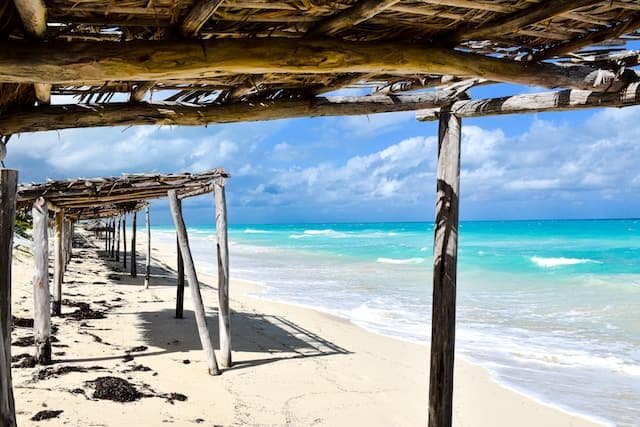
Vinales is a small town located in the Pinar del Río province of Cuba. It is known for its beautiful valley, which is dotted with tobacco farms and mogotes (limestone hills).
Vinales is a great place to relax and enjoy the natural beauty of Cuba. Visitors can take horseback rides go hiking in the valley, or visit one of the many tobacco farms to learn about the process of making Cuban cigars.
Culture
Vinales is a small town with a rural culture. The town is known for its tobacco farms and its beautiful valley. Visitors to Vinales can learn about the process of making Cuban cigars and enjoy the natural beauty of the area.
Historical Interests
Vinales has a rich history dating back to the 16th century. The town was originally inhabited by the Taíno people, who were wiped out by the Spanish conquistadors.
Vinales was later resettled by Spanish colonists, who introduced tobacco farming to the area.
Vinales is also home to a number of historical sites, including the Vinales Valley National Park, which is a UNESCO World Heritage Site.
The park is home to a variety of unique flora and fauna, including the mogotes (limestone hills) that are characteristic of the Vinales Valley.
Travel Logistics
Vinales is located about 180 kilometers from Havana. The town can be reached by bus or taxi from Havana.
Local Experiences
Here are some local experiences that visitors can enjoy in Vinales:
- Visit a tobacco farm: Vinales is known for its tobacco farms, so why not visit one and learn about the process of making Cuban cigars?
- Take a horseback ride through the valley: The Vinales Valley is a beautiful place to take a horseback ride. Visitors can see the tobacco farms, mogotes, and other natural wonders of the valley up close.
- Visit the Cueva del Indio (Indian Cave): The Cueva del Indio is a cave system that is located in the Vinales Valley. Visitors can take a boat tour of the cave system and see its impressive stalactites and stalagmites.
- Visit the Mural de la Prehistoria (Prehistory Mural): The Mural de la Prehistoria is a large mural that is located on the side of a hill in the Vinales Valley. The mural depicts the evolution of life on Earth, from the dinosaurs to the present day.

Culinary and Dining
Vinales has a small culinary scene, but there are a number of restaurants in town that serve traditional Cuban cuisine. Visitors can also find a number of paladares (private restaurants) in Vinales.
Shopping and Souvenirs
Visitors can find a variety of souvenirs in Vinales, including Cuban cigars, rum, coffee, and handicrafts. Popular shopping areas include the main square and the streets leading off of it.
Language and Communication
Spanish is the official language of Cuba. English is not widely spoken, so it is helpful to learn a few basic Spanish phrases before you go.
Conclusion
Vinales is a beautiful town with a lot to offer visitors. Whether you are interested in history, culture, or nature, there is something for everyone in Vinales.
Trinidad
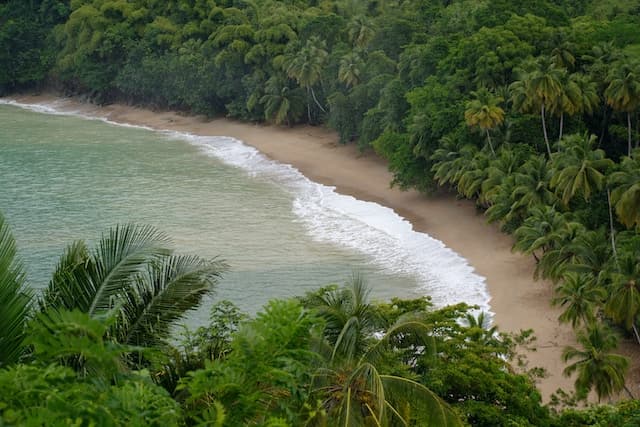
Trinidad is a colonial town located in the Sancti Spíritus province of Cuba. It is a UNESCO World Heritage Site and is known for its well-preserved colonial architecture.
Trinidad is a charming town with cobbled streets and colorful buildings. Visitors can enjoy wandering the streets and admiring the architecture, or visit one of the many museums or art galleries.
Culture
Trinidad is a colonial town with a well-preserved historic center. The town is known for its cobbled streets, colorful buildings, and laid-back atmosphere. Trinidad is a great place to experience a more traditional Cuban culture.
Historical Interests
Trinidad has a rich history dating back to the 16th century. Spanish colonists founded the town and quickly became a prosperous port city.
Trinidad is home to a number of historical sites, including the Plaza Mayor (Main Square), the Iglesia de la Santísima Trinidad (Church of the Holy Trinity), and the Palacio Cantero (Cantero Palace).
Travel Logistics
Trinidad is located about 300 kilometers from Havana. The town can be reached by bus or taxi from Havana.
Local Experiences
Here are some local experiences that visitors can enjoy in Trinidad:
- Visit the Plaza Mayor (Main Square): The Plaza Mayor is the heart of Trinidad and a great place to people-watch and soak up the atmosphere. The square is surrounded by colorful colonial buildings, including the Iglesia de la Santísima Trinidad and the Palacio Cantero.
- Take a walk through the cobbled streets of the historic center: Trinidad’s historic center is a UNESCO World Heritage Site and is well worth exploring. Visitors can wander through the narrow streets, admire the colonial buildings, and visit the many shops and restaurants.
- Visit the Museo Nacional de la Lucha Contra Bandidos (National Museum of the Fight Against Bandits): The Museo Nacional de la Lucha Contra Bandidos is a museum that tells the story of the Cuban government’s campaign against bandits in the 1960s. The museum is located in a former prison and is a must-visit for anyone interested in Cuban history.
- Take a day trip to Playa Ancón: Playa Ancón is a beautiful beach about 15 kilometers from Trinidad. Visitors can relax on the beach, swim in the crystal-clear waters, or go snorkeling or diving.
Culinary and Dining
Trinidad has a small culinary scene, but there are a number of restaurants in town that serve traditional Cuban cuisine. Visitors can also find a number of paladares (private restaurants) in Trinidad.
Shopping and Souvenirs
Visitors can find a variety of souvenirs in Trinidad, including Cuban cigars, rum, coffee, and handicrafts. Popular shopping areas include the Plaza Mayor and the streets leading off of it.
Language and Communication
Spanish is the official language of Cuba. English is not widely spoken, so it is helpful to learn a few basic Spanish phrases before you go.
Conclusion
Trinidad is a charming town with a lot to offer visitors. Whether you are interested in history, culture, or beaches, there is something for everyone in Trinidad.
Varadero
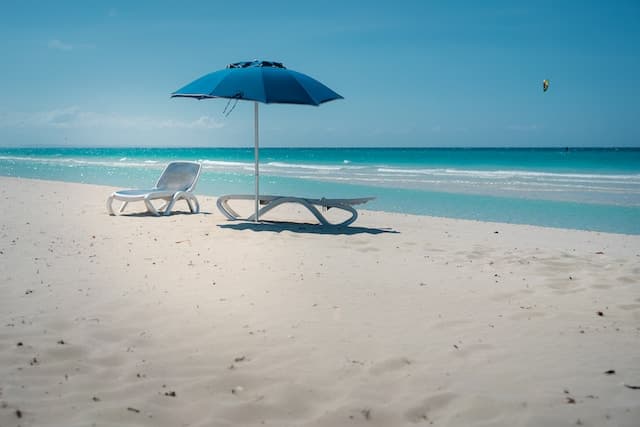
Varadero is a beach resort town located in the Matanzas province of Cuba. It is known for its beautiful beaches, crystal-clear waters, and all-inclusive resorts.
Varadero is a great place to relax and enjoy a beach vacation. Visitors can swim, sunbathe, snorkel, or scuba dive. There are also a variety of other activities available, such as golf, tennis, and horseback riding.
Culture
Varadero is a beach resort town with a cosmopolitan culture. The town is known for its beautiful beaches, all-inclusive resorts, and vibrant nightlife. Varadero is a great place to relax and enjoy a beach vacation.
Historical Interests
Varadero has a relatively short history, dating back to the early 1900s. The town was originally a small fishing village, but it quickly developed into a popular tourist destination. Varadero was a popular destination for American tourists during the pre-revolution era.
Today, Varadero is a popular tourist destination for people from all over the world. The town is home to a number of all-inclusive resorts, as well as a variety of shops, restaurants, and nightclubs.
Travel Logistics
Varadero is located about 140 kilometers east of Havana. The town can be reached by bus or taxi from Havana. Varadero also has an international airport, which is served by a number of airlines.
Local Experiences
Here are some local experiences that visitors can enjoy in Varadero:
- Relax on the beach: Varadero is known for its beautiful beaches. Visitors can relax on the sand, swim in the crystal-clear waters, or go snorkeling or diving.
- Visit the Reserva Ecológica Varahicacos (Varahicacos Ecological Reserve): The Varahicacos Ecological Reserve is a nature reserve located on the Hicacos Peninsula. The reserve is home to a variety of flora and fauna, including mangroves, coral reefs, and sea turtles. Visitors can take a boat tour of the reserve or go hiking on one of the many trails.
- Visit the Parque Josone: Parque Josone is a park located in the center of Varadero. The park is home to a variety of attractions, including a man-made lake, a cave, and a children’s playground. Visitors can rent a boat on the lake, visit the cave, or simply relax in the park’s gardens.
- Enjoy the nightlife: Varadero has a vibrant nightlife scene. Visitors can find a variety of bars, clubs, and discos in town.
Culinary and Dining
Varadero has a diverse culinary scene, with influences from Spain, Africa, and other Caribbean islands. Visitors can find a variety of restaurants in Varadero, from budget-friendly paladares (private restaurants) to upscale international restaurants.
Shopping and Souvenirs
Visitors can find a variety of souvenirs in Varadero, including Cuban cigars, rum, coffee, and handicrafts. Popular shopping areas include the Calle 63 (63rd Street) pedestrian mall and the Plaza América shopping center.
Language and Communication
Spanish is the official language of Cuba. English is not widely spoken, so it is helpful to learn a few basic Spanish phrases before you go.
Conclusion
Varadero is a beautiful beach resort town with a lot to offer visitors. Whether you are looking to relax on the beach, explore a nature reserve, or enjoy the nightlife, there is something for everyone in Varadero.
Holguin
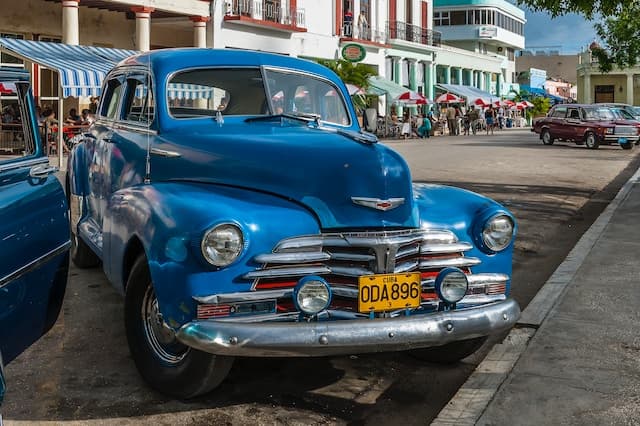
Holguín is a city located in the eastern province of Cuba. It is known for its beautiful beaches, lush rainforests, and laid-back atmosphere.
Holguín is a great place to experience a more authentic Cuban experience. Visitors can visit the city’s many museums and historical sites, or take a day trip to one of the nearby beaches.
Culture
Holguín is a city with a relaxed and laid-back culture. The city is known for its beautiful beaches, lush rainforests, and friendly people. Holguín is a great place to experience a more authentic Cuban experience.
Historical Interests
Holguín was founded by Spanish colonists in 1545. The city was an important center for the sugar industry during the colonial era.
Holguín is home to a number of historical sites, including the Plaza Mayor (Main Square), the Iglesia de San Isidoro de Holguín (Church of Saint Isidore of Holguín), and the Museo Provincial de Holguín (Provincial Museum of Holguín).
Travel Logistics
Holguín is located about 700 kilometers east of Havana. The city can be reached by bus or taxi from Havana. Holguín also has an international airport, which is served by a number of airlines.
Local Experiences
Here are some local experiences that visitors can enjoy in Holguín:
- Visit the Plaza Mayor (Main Square): The Plaza Mayor is the heart of Holguín and a great place to people-watch and soak up the atmosphere. The square is surrounded by colorful colonial buildings, including the Iglesia de San Isidoro de Holguín and the Museo Provincial de Holguín.
- Take a walk through the cobbled streets of the historic center: Holguín’s historic center is well worth exploring. Visitors can wander through the narrow streets, admire the colonial buildings, and visit the many shops and restaurants.
- Visit the Museo Provincial de Holguín (Provincial Museum of Holguín): The Museo Provincial de Holguín is a museum that tells the story of Holguín’s history and culture. The museum has exhibits on the city’s indigenous inhabitants, the colonial era, and the revolutionary period.
- Take a day trip to the Playa Pesquero: Playa Pesquero is a beautiful beach about 20 kilometers from Holguín. Visitors can relax on the sand, swim in the crystal-clear waters, or go snorkeling or diving.
Culinary and Dining
Holguín has a small culinary scene, but there are a number of restaurants in town that serve traditional Cuban cuisine. Visitors can also find a number of paladares (private restaurants) in Holguín.
Shopping and Souvenirs
Visitors can find a variety of souvenirs in Holguín, including Cuban cigars, rum, coffee, and handicrafts. Popular shopping areas include the Plaza Mayor and the streets leading off of it.
Language and Communication
Spanish is the official language of Cuba. English is not widely spoken, so it is helpful to learn a few basic Spanish phrases before you go.
Conclusion
Holguín is a charming city with a lot to offer visitors. Whether you are interested in history, culture, or beaches, there is something for everyone in Holguín.
Santiago de Cuba
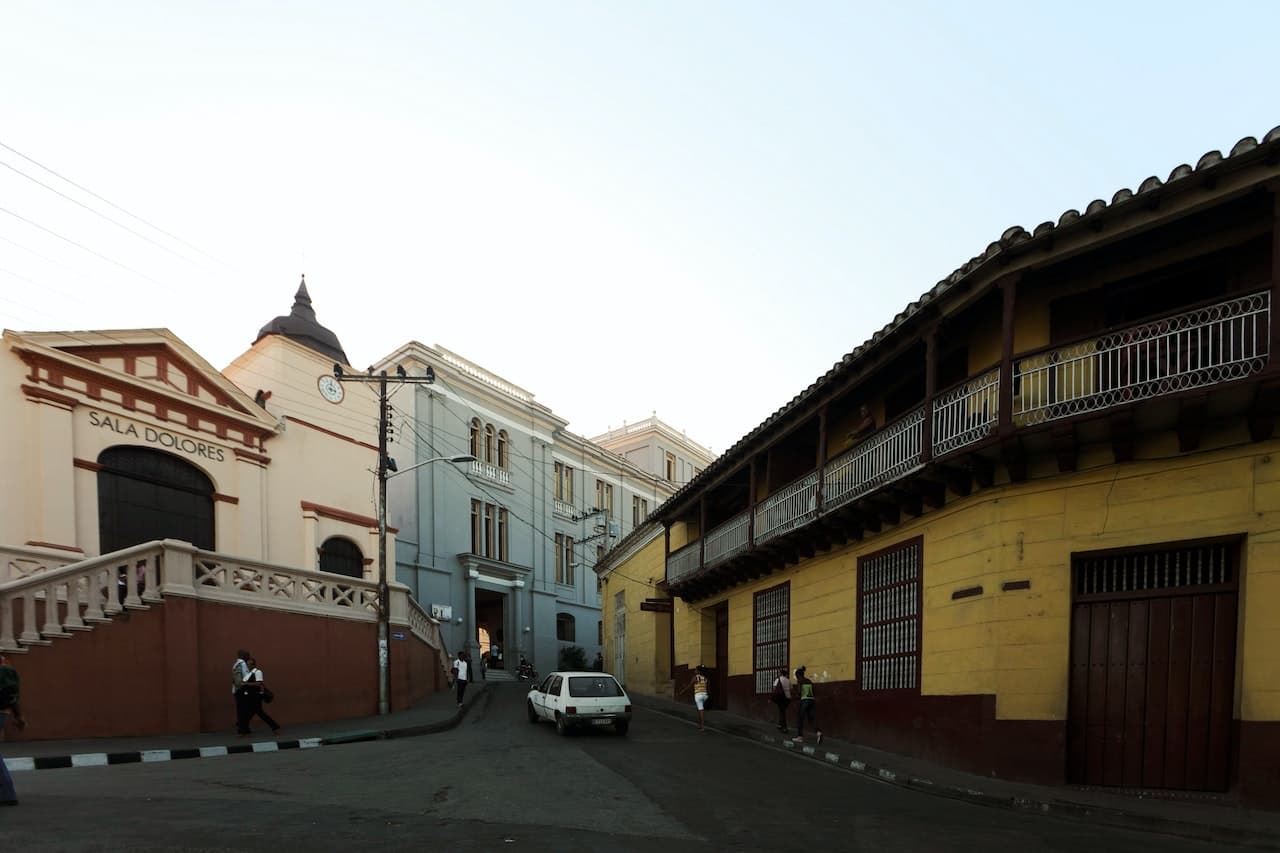
Santiago de Cuba is the second largest city in Cuba and is located in the eastern province of Cuba. It is a vibrant and historic city with a lot to offer visitors.
Santiago de Cuba is the birthplace of the Cuban Revolution and is home to many important historical sites, such as the Moncada Barracks and the Céspedes Park.
Santiago de Cuba is also a great place to experience Cuban culture. Visitors can enjoy live music and dancing at one of the city’s many clubs, or sample traditional Cuban cuisine at one of the many restaurants.
Culture
Santiago de Cuba is a city with a vibrant culture. The city is known for its music, dancing, and festivals. Santiago de Cuba is also home to a number of important historical sites, as well as a thriving arts and culture scene.
Historical Interests
Santiago de Cuba was founded by Spanish colonists in 1515. The city was an important center for the slave trade during the colonial era.
Santiago de Cuba is home to a number of historical sites, including the Castillo de San Pedro de la Roca (Castle of San Pedro de la Roca), the Parque Céspedes (Céspedes Park), and the Basílica Santuario Nacional de Nuestra Señora de la Caridad del Cobre (Basilica Sanctuary of Our Lady of Charity of Cobre).
Travel Logistics
Santiago de Cuba is located about 900 kilometers east of Havana. The city can be reached by bus or taxi from Havana. Santiago de Cuba also has an international airport, which is served by a number of airlines.
Local Experiences
Here are some local experiences that visitors can enjoy in Santiago de Cuba:
- Visit the Castillo de San Pedro de la Roca (Castle of San Pedro de la Roca): The Castillo de San Pedro de la Roca is a UNESCO World Heritage Site and one of the most important historical sites in Santiago de Cuba. The castle was built in the 17th century to protect the city from pirates and corsairs. Visitors can take a tour of the castle and learn about its history.
- Visit the Parque Céspedes (Céspedes Park): Parque Céspedes is the heart of Santiago de Cuba and a great place to people-watch and soak up the atmosphere. The park is surrounded by colorful colonial buildings, including the Catedral de Santiago de Cuba (Cathedral of Santiago de Cuba) and the Casa de la Trova (House of Music).
- Visit the Basílica Santuario Nacional de Nuestra Señora de la Caridad del Cobre (Basilica Sanctuary of Our Lady of Charity of Cobre): The Basílica Santuario Nacional de Nuestra Señora de la Caridad del Cobre is a UNESCO World Heritage Site and one of the most important religious sites in Cuba. The basilica is home to a statue of the Virgen de la Caridad del Cobre, the patron saint of Cuba. Visitors can visit the basilica and learn about its history.
- Enjoy the nightlife: Santiago de Cuba has a vibrant nightlife scene. Visitors can find a variety of bars, clubs, and discos in town.
Culinary and Dining
Santiago de Cuba has a diverse culinary scene, with influences from Spain, Africa, and other Caribbean islands. Visitors can find a variety of restaurants in Santiago de Cuba, from budget-friendly paladares (private restaurants) to upscale international restaurants.
Shopping and Souvenirs
Visitors can find a variety of souvenirs in Santiago de Cuba, including Cuban cigars, rum, coffee, and handicrafts. Popular shopping areas include the Calle Enramadas (Enramada Street) pedestrian mall and the Mercado de Artesanías (Crafts Market).
Language and Communication
Spanish is the official language of Cuba. English is not widely spoken, so it is helpful to learn a few basic Spanish phrases before you go.
Conclusion
Santiago de Cuba is a vibrant and historic city with a lot to offer visitors. Whether you are interested in history, culture, or nightlife, there is something for everyone in Santiago de Cuba.
Baracoa
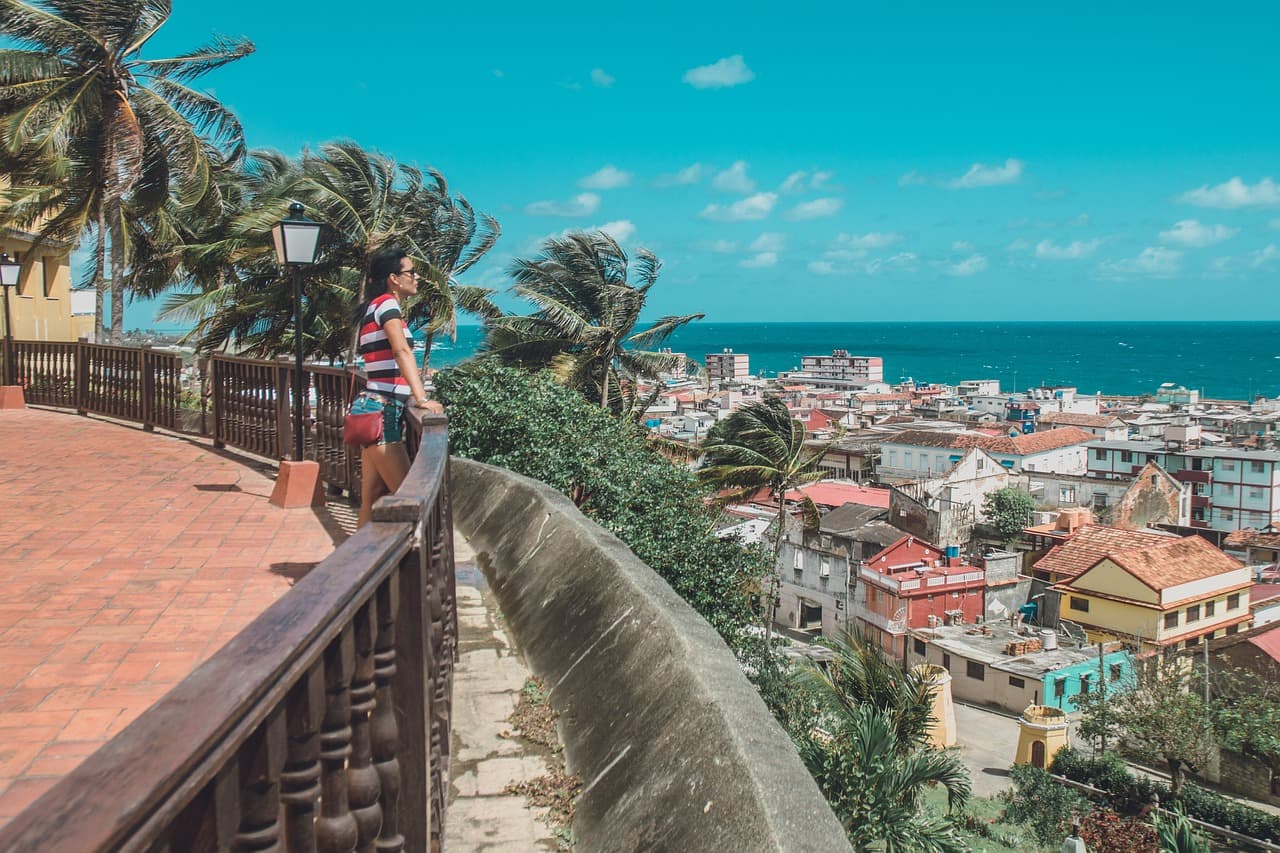
Baracoa is a small town located in the easternmost province of Cuba. It is known for its beautiful beaches, lush rainforests, and unique culture. Baracoa is the first place where Christopher Columbus landed in Cuba.
Baracoa is a great place to experience a more authentic Cuban experience. Visitors can visit the city’s many museums and historical sites, or take a day trip to one of the nearby beaches.
Culture
Baracoa is a small city with a unique culture. The city is known for its Afro-Cuban heritage and its beautiful beaches. Baracoa is a great place to experience a more authentic Cuban experience.
Historical Interests
Baracoa was the first city founded by Christopher Columbus in Cuba in 1492. The city is home to a number of historical sites, including the Castillo de la Real Fuerza de Santa Catalina de Baracoa (Castle of the Royal Force of Saint Catherine of Baracoa), the Iglesia de Nuestra Señora de la Asunción (Church of Our Lady of the Assumption), and the Parque Nacional Alejandro de Humboldt (Alejandro de Humboldt National Park).
Travel Logistics
Baracoa is located about 900 kilometers east of Havana. The city can be reached by bus or taxi from Havana. Baracoa also has a small airport, which is served by a few airlines.
Local Experiences
Here are some local experiences that visitors can enjoy in Baracoa:
- Visit the Castillo de la Real Fuerza de Santa Catalina de Baracoa (Castle of the Royal Force of Saint Catherine of Baracoa): The Castillo de la Real Fuerza de Santa Catalina de Baracoa is a UNESCO World Heritage Site and one of the most important historical sites in Baracoa. The castle was built in the 16th century to protect the city from pirates and corsairs. Visitors can take a tour of the castle and learn about its history.
- Visit the Iglesia de Nuestra Señora de la Asunción (Church of Our Lady of the Assumption): The Iglesia de Nuestra Señora de la Asunción is a UNESCO World Heritage Site and one of the most important religious sites in Baracoa. The church was built in the 16th century and is home to a statue of the Virgen de la Asunción, the patron saint of Baracoa. Visitors can visit the church and learn about its history.
- Visit the Parque Nacional Alejandro de Humboldt (Alejandro de Humboldt National Park): The Parque Nacional Alejandro de Humboldt is a UNESCO World Heritage Site and one of the most important nature reserves in Cuba. The park is home to various flora and fauna, including waterfalls, rainforests, and mountains. Visitors can go hiking, birdwatching, and swimming in the park.
- Take a boat trip to the Cayo Saetía (Saetía Key): Cayo Saetía is a beautiful beach located about 30 kilometers from Baracoa. Visitors can take a boat trip to the key and relax on the beach, swim in the crystal-clear waters, or go snorkeling or diving.
Culinary and Dining
Baracoa has a small culinary scene, but there are a number of restaurants in town that serve traditional Cuban cuisine. Visitors can also find a number of paladares (private restaurants) in Baracoa.
Shopping and Souvenirs
Visitors can find a variety of souvenirs in Baracoa, including Cuban cigars, rum, coffee, and handicrafts. Popular shopping areas include the Plaza Independencia (Independence Square) and the Calle José Martí (José Martí Street).
Language and Communication
Spanish is the official language of Cuba. English is not widely spoken, so it is helpful to learn a few basic Spanish phrases before you go.
Conclusion
Baracoa is a charming city with a lot to offer visitors. Whether you are interested in history, culture, or nature, there is something for everyone in Baracoa
Tips for Travelers
Here are a few tips for travelers visiting Cuba:
- Cuba is a relatively safe country to travel in, but it is important to be aware of your surroundings and take precautions against petty theft.
- Cuba is a cash-based society, so bringing enough cash with you is important. Credit cards are not widely accepted in Cuba.
- Cuba has a dual currency system, with the Cuban peso (CUP) and the Cuban convertible peso (CUC). Tourists are generally required to use CUCs.
- Cuba is a relatively affordable country to travel in. However, prices for accommodation and food can be higher in popular tourist areas.
- Cuba is a Spanish-speaking country, so it is helpful to learn a few basic Spanish phrases before you go.
Conclusion
Cuba is a beautiful and diverse country with a lot to offer tourists. Whether you are interested in history, culture, or beaches, there is a city or town in Cuba that is perfect for you.
Frequently Asked Questions
1. What are the 3 biggest cities in Cuba?
- Havana
- Santiago de Cuba
- Camagüey
2. How many major cities are in Cuba?
This depends on how you define a major city. If you count all municipalities with a population of over 100,000, then there are 12 major cities in Cuba.
3. What is the prettiest place in Cuba?
This is a matter of opinion, but popular contenders include:
- Vinales Valley: A UNESCO World Heritage Site known for its stunning mogotes (limestone hills) and tobacco farms.
- Trinidad: A charming colonial town with cobblestone streets, colorful buildings, and a laid-back atmosphere.
- Varadero: A popular beach resort town with white sand beaches, crystal-clear waters, and all-inclusive resorts.
- Baracoa: A secluded city on Cuba’s easternmost tip with Afro-Cuban heritage, beautiful beaches, and lush rainforests.
4. What is the most populated city of Cuba?
- Havana
- Havana Cuba cities
5. Some of the most popular cities to visit in Cuba include:
- Havana
- Santiago de Cuba
- Camagüey
- Viñales
- Trinidad
- Varadero
- Baracoa
- Cienfuegos
- Holguín
- Santa Clara
- Bayamo
- Guantánamo
6. Cuba cities to visit
Cuba has a rich and diverse culture, and its cities offer something for everyone. Whether you’re interested in history, architecture, music, dance, food, or simply relaxing on the beach, you’re sure to find a city in Cuba that’s perfect for you.
7. Cuba cities by population
The most populous cities in Cuba by population are:
- Havana
- Santiago de Cuba
- Camagüey
- Holguín
- Guantánamo
- Santa Clara
- Las Tunas
- Cienfuegos
- Pinar del Río
- Matanzas
- Ciego de Ávila
- Sancti Spíritus
8. Caribbean Cuba cities
Cuba is an island in the Caribbean Sea, so all of its cities are Caribbean cities.
9. Cuba’s cities alphabetically
Here is a list of Cuba’s cities in alphabetical order:
- Artemisa
- Bayamo
- Camagüey
- Cárdenas
- Cienfuegos
- Ciego de Ávila
- Florida
- Guantánamo
- Havana
- Holguín
- Isle of Youth
- Las Tunas
- Manzanillo
- Matanzas
- Morón
- Nueva Gerona
- Pinar del Río
- Placetas
- San Cristóbal
- Sancti Spíritus
- Santa Clara
- Santiago de Cuba
- Trinidad
10. how many cities are in Cuba
There are 104 municipalities in Cuba, which are grouped into 16 provinces. If you count all municipalities with a population of over 100,000, then there are 12 cities in Cuba. However, there is no official definition of a city in Cuba, so the exact number of cities is a matter of interpretation.
Recent Posts
- How Far is Cuba from Florida? A Comprehensive Guide
- Cuba Beaches: A Comprehensive Guide
- Weather in Cuba: A Comprehensive Guide
- Cuba New Mexico: Exploring Beauty, Diversity, and Warmth

